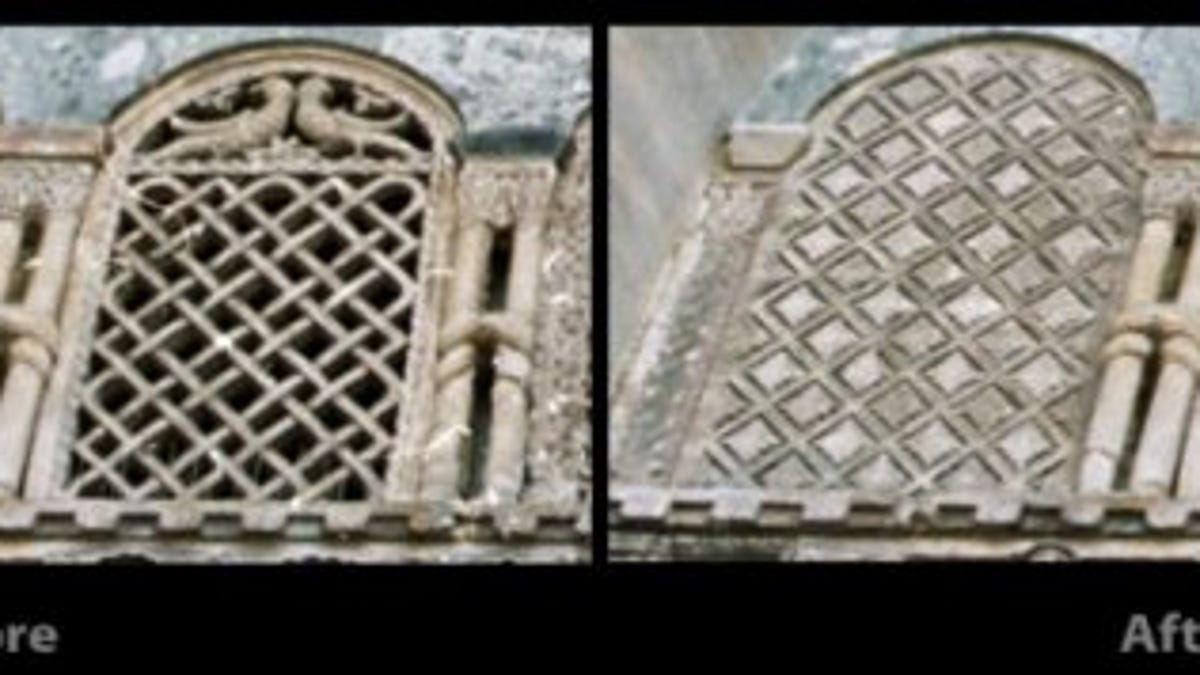Adobe demos next-gen erase tool in Photoshop
What's cooking in Photoshop's labs? A more powerful erase tool that fills in complicated backgrounds, realistic paint, and new abilities to bend and warp images.

It looks as if Photoshop, already famous for its ability to make people look thinner and skies look bluer, could take digital erasure of unsightly objects to an entirely new level.
A feature called "content-aware fill" described in an Adobe video published Tuesday shows the technology used to remove buffalo, telephone wires, and a tree from various images and to clean up stray hairs from an imperfect scan of a print. Photoshop's existing cloning and spot-healing tools can take care of this to some extent, but the new version adds a lot of smarts to the process.
Specifically, instead of using one nearby patch of the image to fill the area that's being erased, it draws on multiple areas--and it uses image analysis to make informed guesses about how to reproduce complicated background. For example, the technology can reproduce the window frames, architectural patterns, a river shoreline, and clouds.
"What this algorithm is doing is copying multiple patches from the surrounding background to try to fit them inside the hole, unlike the old spot healing proximity match that was trying to find one match for each of these holes," said Dan Goldman, researcher in Adobe's Creative Technologies Lab, in the video. "This generally results in a very convincing fill for these holes."
Adobe developed the technology in collaboration with Princeton University and the University of Washington.
Every time Photoshop gets something like this, some folks--not without some reason in my opinion--get concerned that we can't trust the veracity of the images we see. But let's be clear: although the ease and sophistication of editing is increasing, photo manipulation has been going on for more than a century. And the way I see it, the profusion of digital cameras and ease of posting photos online probably means reality is being documented in unretouched form more comprehensively than ever.
Adobe touted other Photoshop features from the labs, too, in an earlier video released after the recent Photoshop World conference.
One of those new features aims to bring some realism to painting processes. Paint can be spread out and blended, and 3D models of various brushes simulate the behavior of actual brushes with different bristle configurations.
The other was a more sophisticated warping technology in which anchor points determine what parts of the image is fixed and other movable points are used to bend and stretch other parts of the image.
In addition, hinge points can make it possible to anchor the point of a person's elbow, for example, while moving the forearm.

